-
 Bitcoin
Bitcoin $107,680.4588
-0.98% -
 Ethereum
Ethereum $2,524.8906
-0.38% -
 Tether USDt
Tether USDt $1.0003
0.00% -
 XRP
XRP $2.3085
-1.38% -
 BNB
BNB $667.1259
-0.60% -
 Solana
Solana $172.0597
-2.84% -
 USDC
USDC $0.9999
0.01% -
 Dogecoin
Dogecoin $0.2196
-2.99% -
 Cardano
Cardano $0.7463
-0.34% -
 TRON
TRON $0.2710
0.11% -
 Hyperliquid
Hyperliquid $38.1513
7.56% -
 Sui
Sui $3.5299
-2.42% -
 Chainlink
Chainlink $15.1052
-1.72% -
 Avalanche
Avalanche $22.4835
-1.92% -
 Stellar
Stellar $0.2833
-1.14% -
 Shiba Inu
Shiba Inu $0.0...01411
-1.90% -
 UNUS SED LEO
UNUS SED LEO $8.8866
0.94% -
 Bitcoin Cash
Bitcoin Cash $412.0371
-2.96% -
 Hedera
Hedera $0.1846
-2.70% -
 Monero
Monero $415.1787
2.92% -
 Toncoin
Toncoin $2.9646
-2.32% -
 Litecoin
Litecoin $94.0837
-2.23% -
 Polkadot
Polkadot $4.4182
-3.18% -
 Bitget Token
Bitget Token $5.3218
-5.11% -
 Pi
Pi $0.7759
-0.76% -
 Pepe
Pepe $0.0...01310
-5.23% -
 Dai
Dai $0.9998
-0.01% -
 Ethena USDe
Ethena USDe $1.0006
0.00% -
 Aave
Aave $263.4213
0.13% -
 Uniswap
Uniswap $6.0244
-2.20%
How does the Lightning Network work? Understand the principles of the Lightning Network in one article
The Lightning Network enables faster, cheaper transactions by creating off-chain payment channels, reducing the load on the main blockchain and enhancing scalability.
May 25, 2025 at 11:01 pm
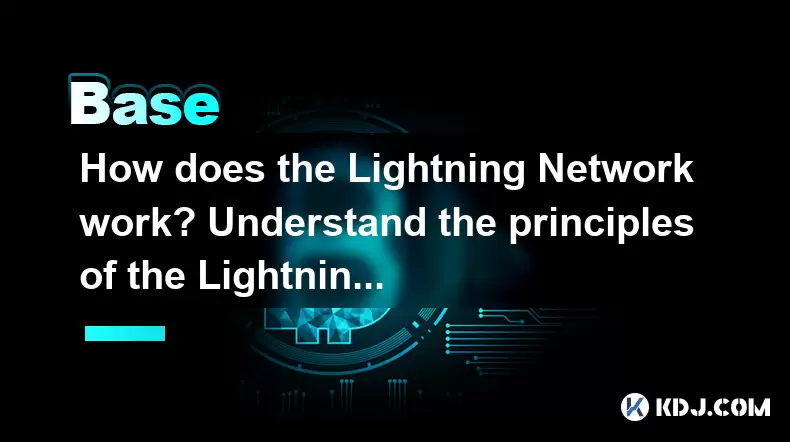
The Lightning Network is a second-layer payment protocol built on top of a blockchain, primarily designed to facilitate faster and cheaper transactions. It was initially proposed to address the scalability issues faced by Bitcoin and other cryptocurrencies. By enabling off-chain transactions, the Lightning Network aims to reduce the burden on the main blockchain, thereby improving its overall efficiency and speed.
Principles of the Lightning Network
The core principle behind the Lightning Network is the creation of payment channels between two parties. These channels allow multiple transactions to occur off-chain, only settling the final state on the blockchain. This significantly reduces the transaction fees and speeds up the process, as the blockchain is not involved in every single transaction.
To understand how the Lightning Network works, it's essential to grasp the concept of payment channels. A payment channel is established when two parties lock a certain amount of cryptocurrency into a multi-signature wallet, also known as a 2-of-2 multisig wallet. This wallet requires both parties to sign off on any transaction before it can be executed.
Opening a Payment Channel
To open a payment channel, the following steps are necessary:
- Initiate a Funding Transaction: The first step involves one party sending a funding transaction to the blockchain, which locks the agreed-upon amount of cryptocurrency into the multisig wallet.
- Create a Channel Agreement: Both parties then agree on the terms of the channel, including the initial balance and any rules for the channel's operation.
- Broadcast the Funding Transaction: Once the funding transaction is confirmed on the blockchain, the payment channel is officially open, and off-chain transactions can begin.
Conducting Off-Chain Transactions
Once the payment channel is open, transactions can occur off-chain. Here's how it works:
- Propose a Transaction: One party proposes a transaction by updating the channel's balance. For example, if Alice wants to send 0.1 BTC to Bob, she proposes a new balance where Bob's share increases by 0.1 BTC, and hers decreases by the same amount.
- Sign the Transaction: Both parties sign the new transaction, but it is not broadcast to the blockchain.
- Multiple Transactions: This process can be repeated multiple times, allowing for numerous transactions to take place without touching the blockchain.
Closing a Payment Channel
When both parties agree to close the channel, the final state of the channel is settled on the blockchain. The steps to close a channel are as follows:
- Propose a Closing Transaction: One party proposes a closing transaction that reflects the final balance in the channel.
- Sign the Closing Transaction: Both parties sign the closing transaction.
- Broadcast the Closing Transaction: The signed transaction is broadcast to the blockchain, and once confirmed, the funds are distributed according to the final balance.
Routing Payments Through the Network
The Lightning Network's true power lies in its ability to route payments through a network of interconnected payment channels. If Alice wants to send money to Carol but does not have a direct channel with her, she can use Bob's channel as an intermediary. Here's how it works:
- Find a Route: Alice's wallet software finds a route through the network to Carol, possibly involving multiple hops.
- Lock the Funds: Alice locks the funds in her channel with Bob, specifying that they can only be released to Bob once he forwards them to Carol.
- Forward the Payment: Bob forwards the payment to Carol through his channel with her.
- Release the Funds: Once Carol receives the payment, Bob can release the funds from his channel with Alice.
This process ensures that payments can be made across the network even if direct channels do not exist between all parties.
Security and Trust in the Lightning Network
The Lightning Network relies on cryptographic techniques to ensure the security of transactions. Hashed Time-Locked Contracts (HTLCs) play a crucial role in this. An HTLC is a type of smart contract that requires the recipient to acknowledge receiving the payment within a specified time frame or forfeit it.
- Creating an HTLC: When Alice wants to send money to Bob, she creates an HTLC that locks the funds until Bob provides a cryptographic hash that matches a predefined secret.
- Releasing the Funds: If Bob provides the correct hash within the time frame, he can claim the funds. If he fails to do so, the funds are returned to Alice.
This mechanism ensures that funds are not stuck in the network and that transactions can be safely routed through multiple parties.
Advantages of the Lightning Network
The Lightning Network offers several advantages over traditional on-chain transactions:
- Speed: Transactions are nearly instantaneous, as they do not need to wait for blockchain confirmation.
- Cost: Transaction fees are significantly lower, as the blockchain is only used for opening and closing channels.
- Scalability: By moving transactions off-chain, the Lightning Network can handle a much higher volume of transactions without congesting the main blockchain.
Challenges and Considerations
While the Lightning Network holds great promise, it also faces several challenges:
- Complexity: Setting up and managing payment channels can be complex for users unfamiliar with the technology.
- Liquidity: Channels need to be funded with enough liquidity to handle transactions, which can be a barrier for some users.
- Centralization Risks: If a few nodes control a significant portion of the network's channels, it could lead to centralization, undermining the decentralized nature of cryptocurrencies.
Understanding these principles and mechanisms is crucial for anyone looking to utilize the Lightning Network effectively. By facilitating faster, cheaper, and more scalable transactions, the Lightning Network represents a significant advancement in the world of cryptocurrencies.
Frequently Asked Questions
Q1: Can the Lightning Network be used with cryptocurrencies other than Bitcoin?
Yes, the Lightning Network can be adapted for use with other cryptocurrencies that support smart contracts and multi-signature transactions. For example, Litecoin has implemented its own version of the Lightning Network, and other cryptocurrencies are exploring similar solutions.
Q2: How does the Lightning Network handle disputes between parties?
The Lightning Network uses cryptographic proofs and time-locked transactions to handle disputes. If a party tries to cheat by broadcasting an outdated transaction, the other party can use the latest signed transaction to claim the correct balance on the blockchain.
Q3: What happens if a payment channel is left open for a long time?
Leaving a payment channel open for an extended period can tie up funds that could be used elsewhere. Additionally, if one party becomes unresponsive, it can be challenging to close the channel and reclaim the funds. It's generally recommended to close channels periodically to manage liquidity and mitigate risks.
Q4: Is it possible to lose funds on the Lightning Network?
While the Lightning Network is designed to be secure, there are risks involved. If a user loses their private keys or if a malicious party exploits a vulnerability in the network, funds can be lost. It's essential to use secure practices and stay informed about the latest developments in Lightning Network security.
Disclaimer:info@kdj.com
The information provided is not trading advice. kdj.com does not assume any responsibility for any investments made based on the information provided in this article. Cryptocurrencies are highly volatile and it is highly recommended that you invest with caution after thorough research!
If you believe that the content used on this website infringes your copyright, please contact us immediately (info@kdj.com) and we will delete it promptly.
- Michael Saylor Signals Massive Bitcoin Purchase Again
- 2025-05-26 06:15:13
- Rare 2008 20p coin worth 300 times its value as people told to check their spare change
- 2025-05-26 06:15:13
- Pepeto Price Prediction, Big Potential. Best Crypto Presale to Buy Now
- 2025-05-26 06:10:12
- In the Rapidly Evolving Blockchain Landscape
- 2025-05-26 06:10:12
- Swiss luxury watchmaker Franck Muller launches a new limited-edition watch collection
- 2025-05-26 06:05:12
- APT Miner: A Cloud Mining Platform Promises 100% Uptime Guarantee
- 2025-05-26 06:05:12
Related knowledge
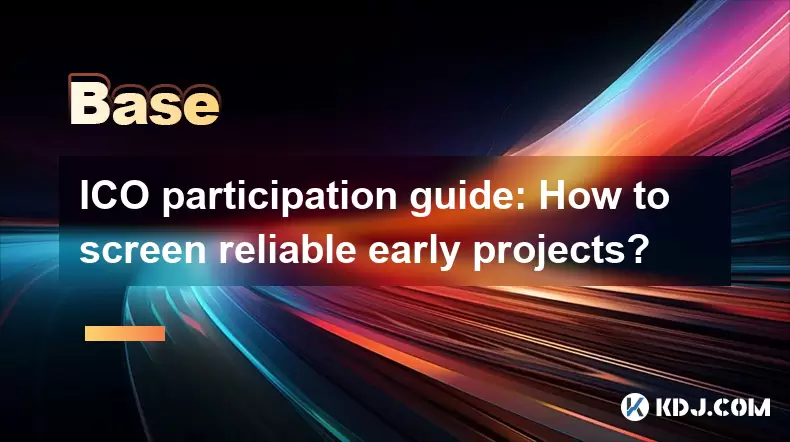
ICO participation guide: How to screen reliable early projects?
May 24,2025 at 12:07am
Introduction to ICOsInitial Coin Offerings (ICOs) are a popular method for new cryptocurrency projects to raise funds. In an ICO, a project sells its native tokens to investors in exchange for established cryptocurrencies like Bitcoin or Ethereum. While ICOs offer the potential for high returns, they also come with significant risks, including the possi...
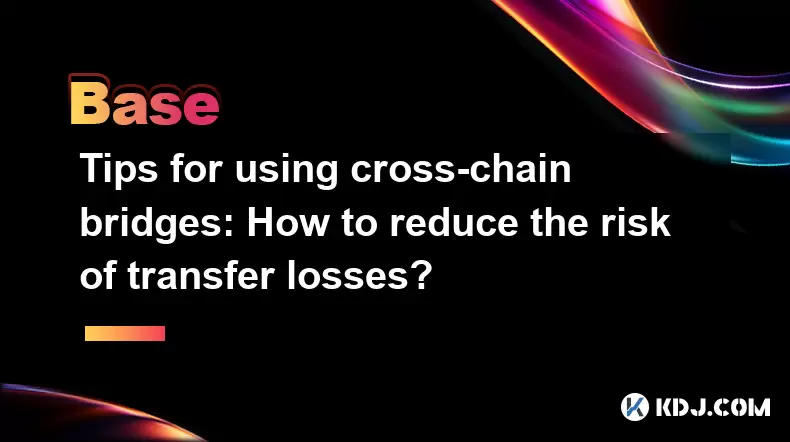
Tips for using cross-chain bridges: How to reduce the risk of transfer losses?
May 24,2025 at 05:21pm
Using cross-chain bridges can be a powerful tool for transferring assets between different blockchain networks. However, the process comes with inherent risks, particularly the potential for transfer losses. This article will provide detailed tips on how to minimize these risks and ensure a safer cross-chain transfer experience. Understanding Cross-Chai...
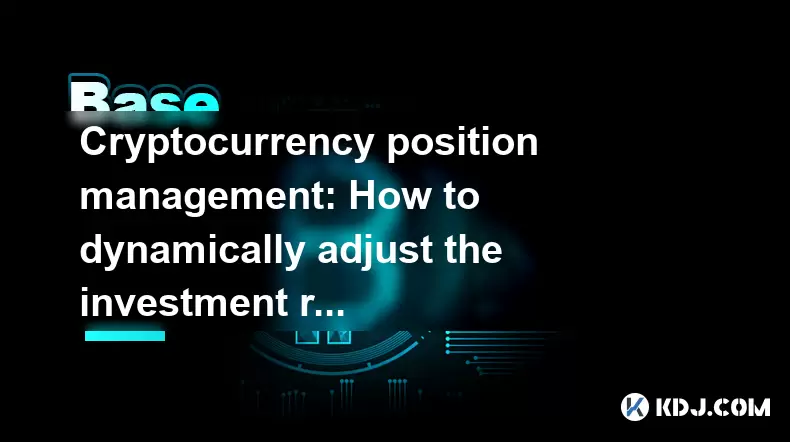
Cryptocurrency position management: How to dynamically adjust the investment ratio?
May 23,2025 at 08:21pm
Cryptocurrency position management is a crucial skill for any investor looking to maximize returns while minimizing risks. Dynamically adjusting the investment ratio involves regularly reviewing and rebalancing your portfolio to ensure it aligns with your risk tolerance, market conditions, and investment goals. This article will guide you through the pr...
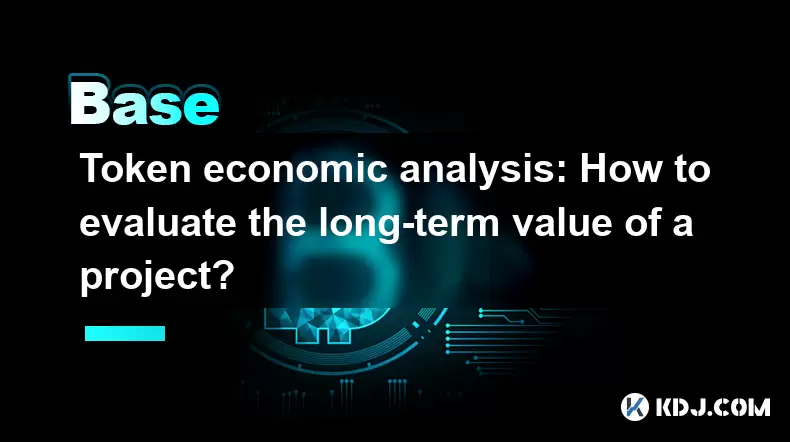
Token economic analysis: How to evaluate the long-term value of a project?
May 24,2025 at 11:14pm
Token economic analysis is a crucial aspect of evaluating the long-term value of a cryptocurrency project. It involves understanding the token's design, its utility within the ecosystem, and the overall economic model that drives its value. By delving into these elements, investors can gain insights into the sustainability and potential growth of a proj...
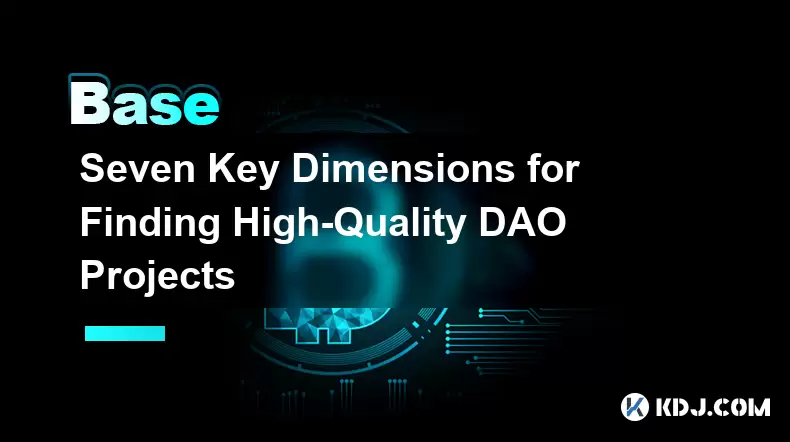
Seven Key Dimensions for Finding High-Quality DAO Projects
May 25,2025 at 02:08am
In the rapidly evolving world of decentralized finance and governance, Decentralized Autonomous Organizations (DAOs) have emerged as a pivotal innovation. These entities, which operate on blockchain technology, allow for decentralized decision-making and resource management. However, not all DAOs are created equal, and identifying high-quality projects ...
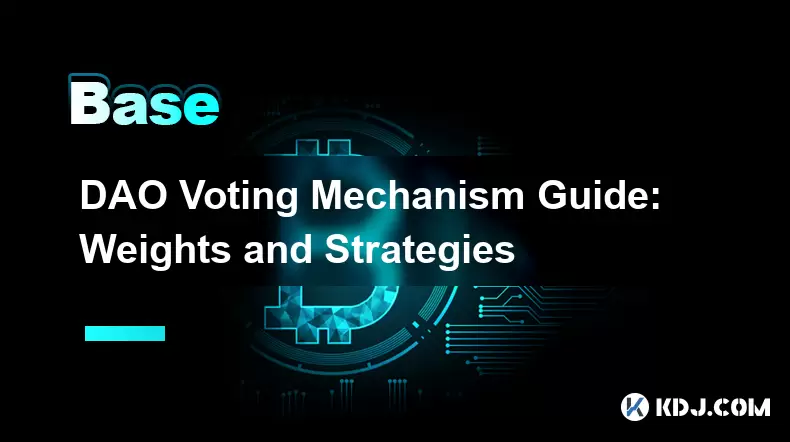
DAO Voting Mechanism Guide: Weights and Strategies
May 25,2025 at 08:07am
Introduction to DAO Voting MechanismsDecentralized Autonomous Organizations (DAOs) are entities on the blockchain that operate through rules encoded as smart contracts. A crucial aspect of DAOs is their voting mechanisms, which allow members to make collective decisions. Understanding the weights and strategies behind these voting mechanisms is essentia...

ICO participation guide: How to screen reliable early projects?
May 24,2025 at 12:07am
Introduction to ICOsInitial Coin Offerings (ICOs) are a popular method for new cryptocurrency projects to raise funds. In an ICO, a project sells its native tokens to investors in exchange for established cryptocurrencies like Bitcoin or Ethereum. While ICOs offer the potential for high returns, they also come with significant risks, including the possi...

Tips for using cross-chain bridges: How to reduce the risk of transfer losses?
May 24,2025 at 05:21pm
Using cross-chain bridges can be a powerful tool for transferring assets between different blockchain networks. However, the process comes with inherent risks, particularly the potential for transfer losses. This article will provide detailed tips on how to minimize these risks and ensure a safer cross-chain transfer experience. Understanding Cross-Chai...

Cryptocurrency position management: How to dynamically adjust the investment ratio?
May 23,2025 at 08:21pm
Cryptocurrency position management is a crucial skill for any investor looking to maximize returns while minimizing risks. Dynamically adjusting the investment ratio involves regularly reviewing and rebalancing your portfolio to ensure it aligns with your risk tolerance, market conditions, and investment goals. This article will guide you through the pr...

Token economic analysis: How to evaluate the long-term value of a project?
May 24,2025 at 11:14pm
Token economic analysis is a crucial aspect of evaluating the long-term value of a cryptocurrency project. It involves understanding the token's design, its utility within the ecosystem, and the overall economic model that drives its value. By delving into these elements, investors can gain insights into the sustainability and potential growth of a proj...

Seven Key Dimensions for Finding High-Quality DAO Projects
May 25,2025 at 02:08am
In the rapidly evolving world of decentralized finance and governance, Decentralized Autonomous Organizations (DAOs) have emerged as a pivotal innovation. These entities, which operate on blockchain technology, allow for decentralized decision-making and resource management. However, not all DAOs are created equal, and identifying high-quality projects ...

DAO Voting Mechanism Guide: Weights and Strategies
May 25,2025 at 08:07am
Introduction to DAO Voting MechanismsDecentralized Autonomous Organizations (DAOs) are entities on the blockchain that operate through rules encoded as smart contracts. A crucial aspect of DAOs is their voting mechanisms, which allow members to make collective decisions. Understanding the weights and strategies behind these voting mechanisms is essentia...
See all articles























































































